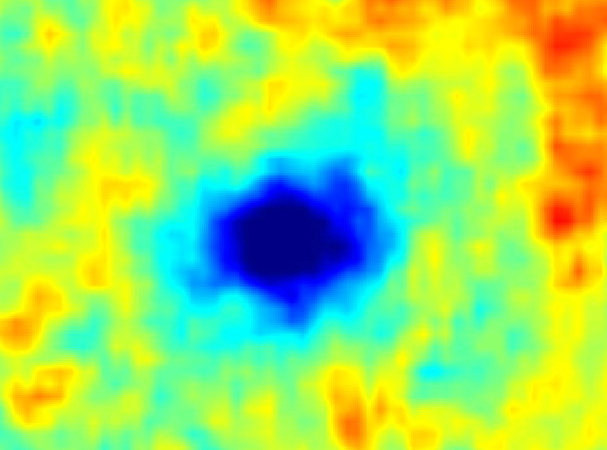|
|
All of our published results come so far from the SuZIE II instrument which was capable of setting limits of ~ 1300 km s-1 to the peculiar velocity of a bright cluster in about 4-20 hours of integration time. This level of sensitivity is insufficient to measure a large cluster sample. We are about to commission a more sensitive instrument (SuZIE III) that will take advantage of improvements in optical design techniques, electronics and filters. SuZIE III will continue to be operated on the 10m telescope at the Caltech Submillimeter Observatory (CSO) on Mauna Kea, Hawaii, but can in principle be operated on any suitable telescope. The new receiver is shown in the picture below.
SuZIE III will be able to map a region 6' x 2' simultaneously at 150, 220, 280 and 350 GHz. This wide frequency coverage will enable us to separate the thermal and kinematic SZ effects from point source emission due primarily to dusty galaxies. A simulated SuZIE III map is shown below, using a cluster from simulations by Martin White. The first panel also shows the locations of sub-millimeter point sources in the field. The contrast in the 150 GHz panel has been increased by a factor of 20 so that the cluster can be clearly seen against a background on intrinsic CMB anisotropies (the red area to the upper right and the blue area in the lower left). Instrument noise is included, corresponding to an integration time of 2 hours per pointing. In 2 hour, SuZIE III will set limits of < 400 km/s to the peculiar velocity of a single cluster. A large sample of clusters can then be used to determine the matter density parameter to +/- 0.02.
|

